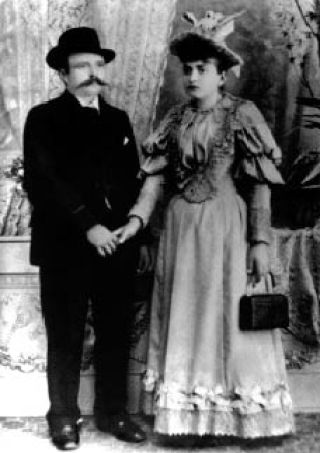I was looking forward to a visit from Peter Seghesio, as Seghesio Vineyards zinfandel has been a favorite of mine for years. Part of the history captivated me when I researched Seghesio on the Internet: the Seghesios were part of the Italian Swiss Colony.
If you have been around for as long as I have, Italian Swiss Colony is a brand which rings a resounding bell. Italian Swiss Colony was one of those many bulk wine brands from California like Cribari, Gallo, Almaden and Franzia. Almaden came in huge, bowling ball-shaped bottles that people used to make terrariums by cutting off the bottoms. Franzia had a skinny bottle which they advertised as fitting in the door of your refrigerator. As tastes have evolved, the Almaden and Franzia bottles do not exist anymore. I tried to find a label of Italian Swiss Colony, vaguely remembering that it had a girl who looked like Heidi of the Alps on it.
I had no idea that there was an actual Italian Swiss Colony. The “Colony,” as it was known, hired immigrants for three-year stints, providing room and board, and then a lump sum at the end of those three years, which enabled employees to buy land or set up a business.
The Seghesio story began in 1886, when Edoardo Seghesio departed his family’s vineyards in Piedmonte, Italy, for a new life in America. At Italian Swiss Colony, Seghesio rose through the ranks to winemaker, but he was homesick. As in many stories, it was the love of a good woman that saved him. Seghesio married the niece of the colony’s manager, Angela Vasconi, in 1894. A year later, they purchased a modest home with 56 acres which they planted in zinfandel. Seghesio continued working at the Colony while working on his own winery after work. Seven years later, the winery was completed.
In the years before Prohibition, the Seghesio Winery flourished, so much so that Seghesio — not believing that Prohibition would happen, or if it did, it would not last long — purchased the Colony with its four million-gallon capacity and over 1,000 acres. Not only did Prohibition come about, but it persisted for 14 long years. Even though the Colony was a bargain at $127,500, it became such a financial burden that Seghesio took on partners and eventually sold his shares to them.
Seghesio died the following year, and his wife, Angela, took over the winery with her three sons. For the next 24 years until her death, the family focused on bulk wine, producing almost two million gallons at its peak.
Flash forward to 2009. Four generations of Seghesios have tended more than 400 acres of vineyards as the family has accrued more estate land since the original humble 56 acres over 100 years ago. Foreseeing wine trends, they began producing quality wines under the Seghesio name and label for the first time in 1983.
Focusing on only their own estate-grown grapes, the Seghesios’ production is down to 30,000 cases, but the wine is high quality. Harkening back to their roots, zinfandel is predominant.
Seghesio Home Ranch zinfandel: $34
Seghesio Old Vine zinfandel: $34
Seghesio Rockpile zinfandel: $34
The Seghesio Sonoma zinfandel is going to be available in August.
2009 Auction of Washington Wines
On Saturday, Aug. 15, the 22nd annual Gala Auction will be on the grounds of Chateau Ste. Michelle in Woodinville. The menu will be prepared by world-renowned chefs and accompanied by an impressive selection of Washington wines. The auction benefits Children’s Hospital and the Washington Wine Education Foundation.
On the previous Thursday, Aug. 13, there will be a Barrel Auction and Picnic with the winemakers on the grounds of Chateau Ste. Michelle.
Tickets for these two events and for the Covey Walk/Run on Saturday are available by calling (206) 326-5747 or by contacting auctionofwashingtonwines.org.
Dee Hitch can be reached at rockypointlane@aol.com.



